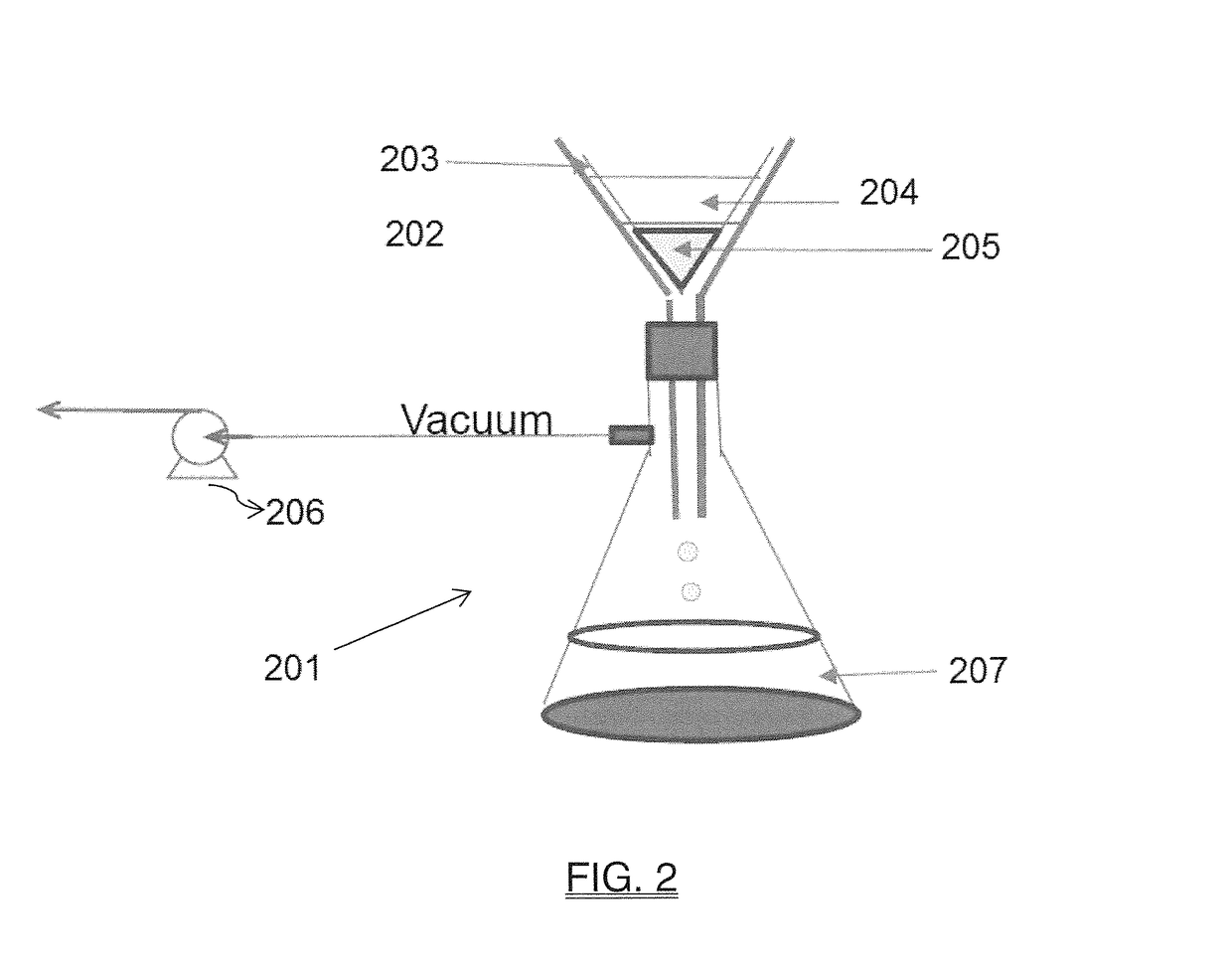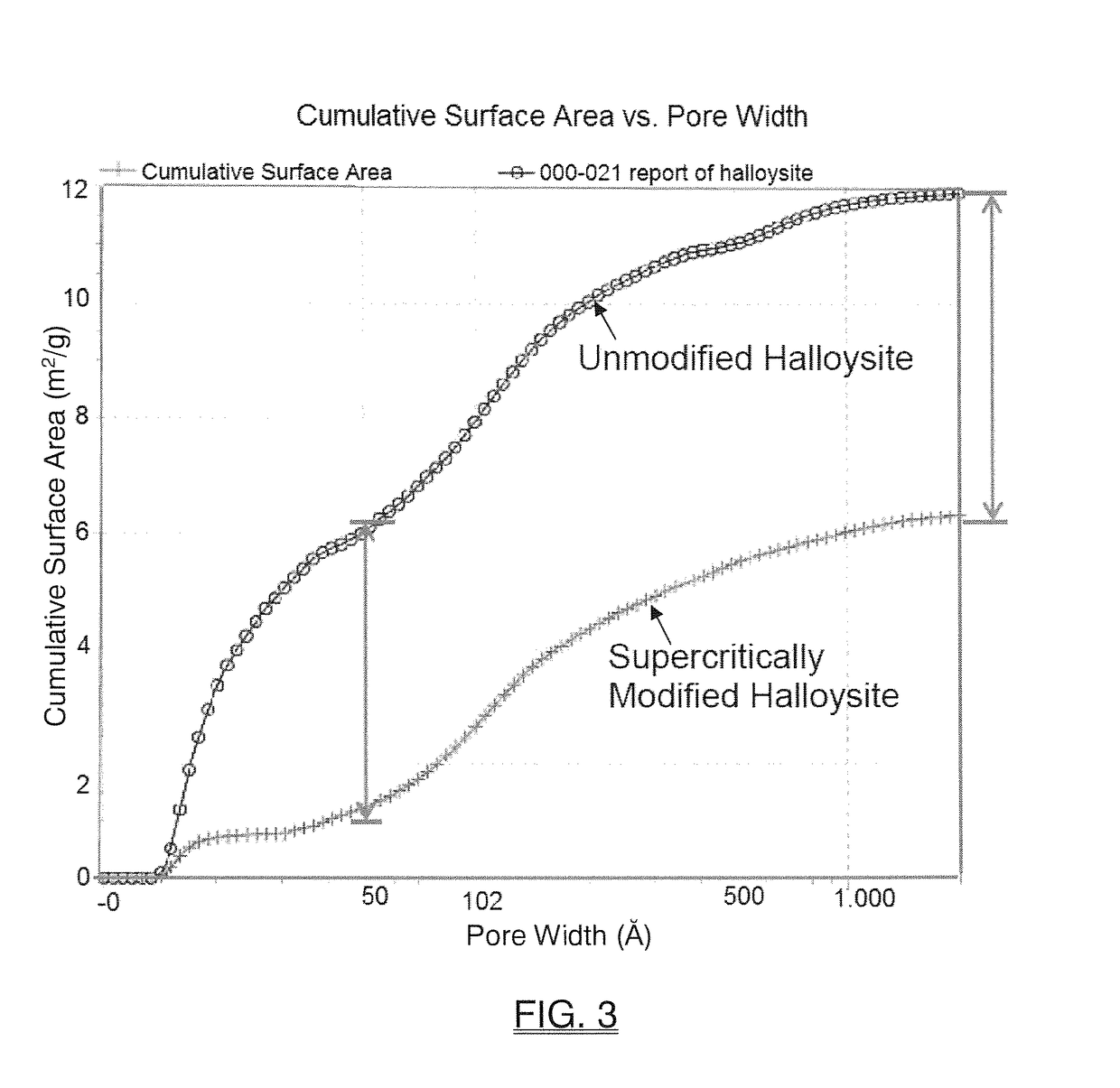Supercritical carbon dioxide morphologically modified acid-based halloysite catalyst
- Summary
- Abstract
- Description
- Claims
- Application Information
AI Technical Summary
Benefits of technology
Problems solved by technology
Method used
Image
Examples
example 1
[0111]Critical Dimension for Free Molecular Motions and Mobility Through the Pore Opening
[0112]The critical dimensions for uninhibited mobility for monomers, dimers, trimers . . . , and grown oligomers can be estimated based on the computation of molecular dimensions of the n-mers (oligomers of polymerization degree of “n”). The reactant (THF) and product oligomers (PTMEA) remain in the liquid phase throughout the reaction process. Therefore, instead of using the mean free path of molecules (as in the case with gaseous molecules), the molecular sizes of n-mers can be directly compared to the pore mouth opening (i.e., pore diameter). The following general assumptions are made in the molecular computation:[0113]1. Oligomers produced in the pores are linear, i.e., no branching.[0114]2. The bond lengths for C—C and C—O bonds are 1.54 and 1.44 Angstroms respectively and the angle between two adjacent C—C bonds is 109°.[0115]3. The temperature is 50° C.
[0116]Based on the computation of li...
example 2
[0122]General Description of Supercritical CO2 Treatment Procedure (FIG. 6)[0123](1) A reactor thimble which was specially made of stainless steel 316 to hold the halloysite sample. The distributor plate (a finely perforated plate) was installed and used to hold the sample on it. This plate allows the CO2 to diffuse directly through the halloysite sample bed. This “flow-through” condition is deemed important for a good treatment, since it ensures excellent mass transfer of CO2 to the halloysite particles and their pores. It also facilitates an easy and full recovery of the SC-treated sample after the treatment experiment.[0124](2) Autoclave-based reactor body (SS316) with a heating jacket, of a 1-liter volume. The thimble is placed inside of this pressure vessel.[0125](3) The reactor top which is bolted onto the reactor body. Proper torqueing is very important to completely seal the reactor. This is why it is called a top-loading bolt-closure reactor.[0126](4) Valve for CO2 supply a...
example 3
[0167]Optimization of Supercritical Treatment Conditions
[0168]A fluid that exists at a temperature higher than its critical temperature and at a pressure higher than its critical pressure is called a supercritical fluid. A supercritical fluid exhibits extraordinary physico-chemical properties that are unattainable and drastically different from its liquid or vapor phase counterparts. Such properties include density, dielectric constant, viscosity, polarity, diffusivity, solubility, and more. The critical temperature and pressure of carbon dioxide (CO2) is 31.4° C. and 72.9 atm (or, 1072 psi), respectively. Therefore, carbon dioxide which exists at T>31.4° C. and P>1072 psi is supercritical carbon dioxide. To validate and compare the efficacy of the supercritical CO2 treatment on halloysite, various supercritical conditions of CO2 were applied. Catalysts were made using the procedures described in Example 10 and polymerization runs were also carried out the standardized procedure (Ex...
PUM
| Property | Measurement | Unit |
|---|---|---|
| Temperature | aaaaa | aaaaa |
| Temperature | aaaaa | aaaaa |
| Temperature | aaaaa | aaaaa |
Abstract
Description
Claims
Application Information
 Login to view more
Login to view more - R&D Engineer
- R&D Manager
- IP Professional
- Industry Leading Data Capabilities
- Powerful AI technology
- Patent DNA Extraction
Browse by: Latest US Patents, China's latest patents, Technical Efficacy Thesaurus, Application Domain, Technology Topic.
© 2024 PatSnap. All rights reserved.Legal|Privacy policy|Modern Slavery Act Transparency Statement|Sitemap



